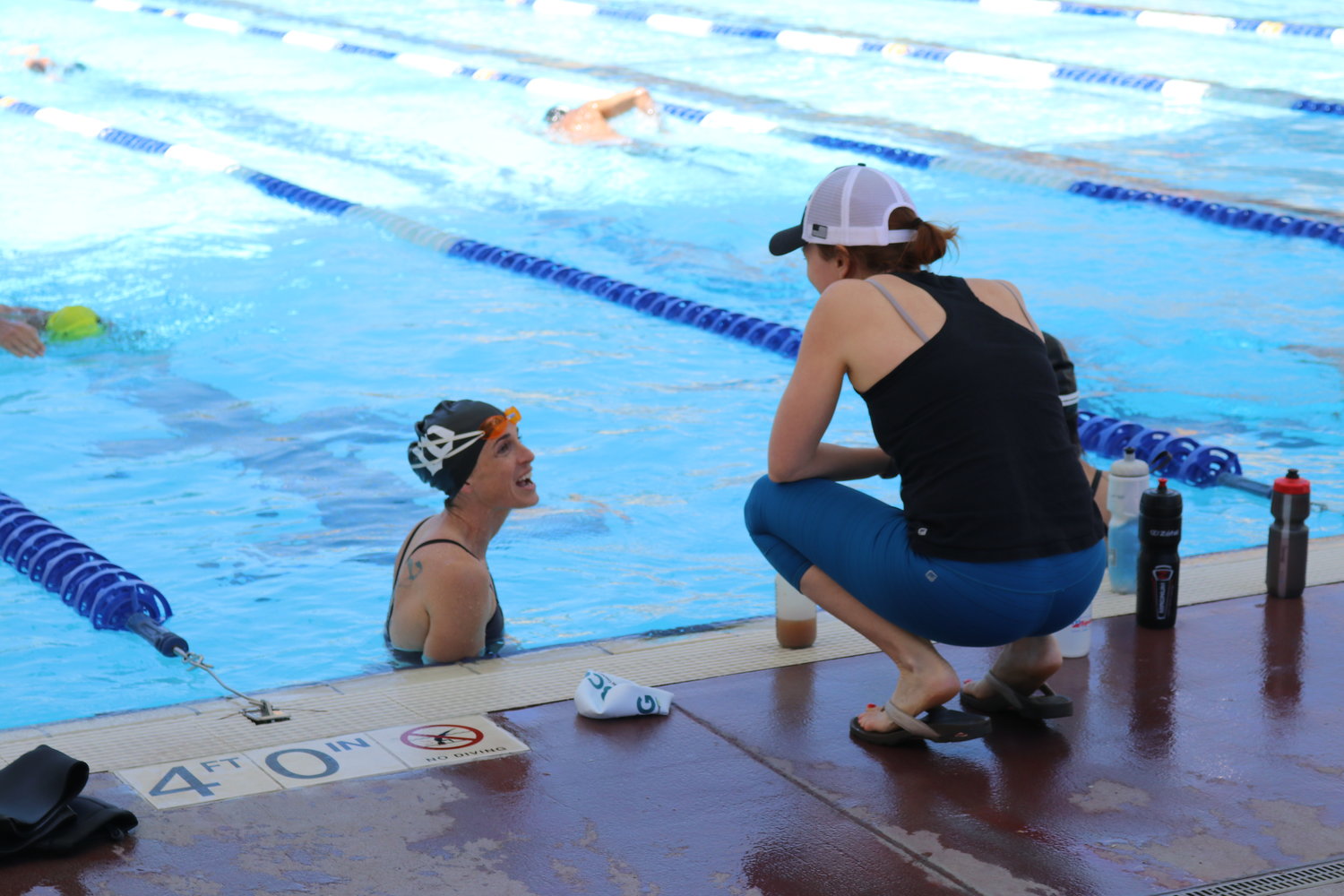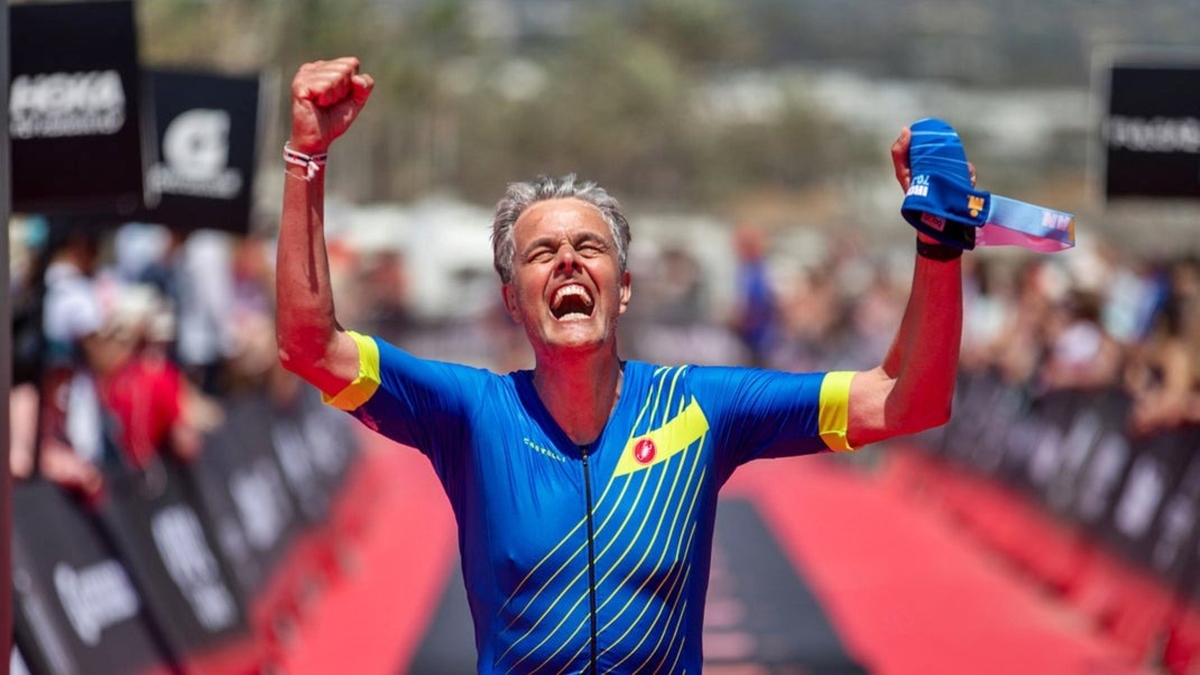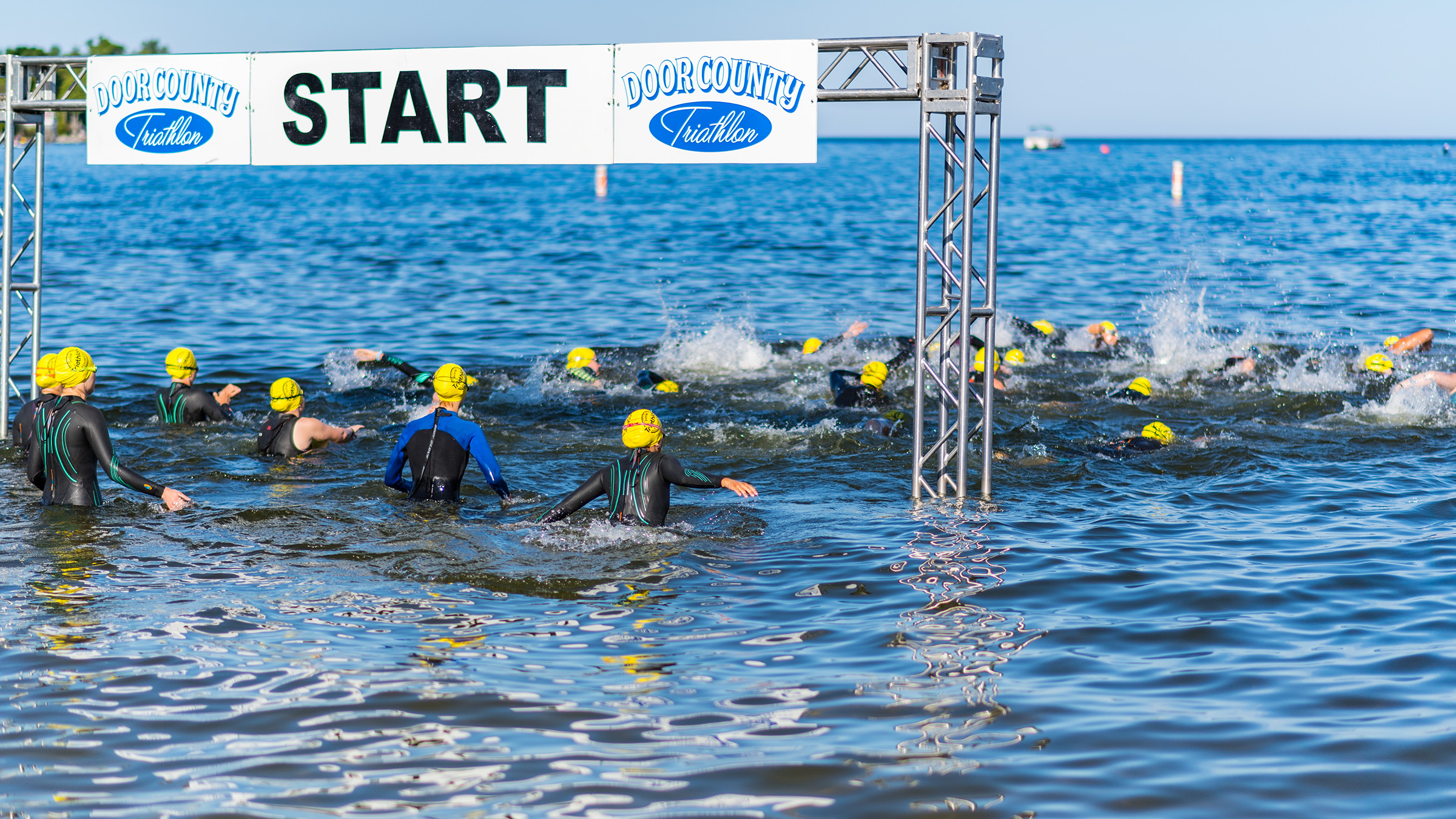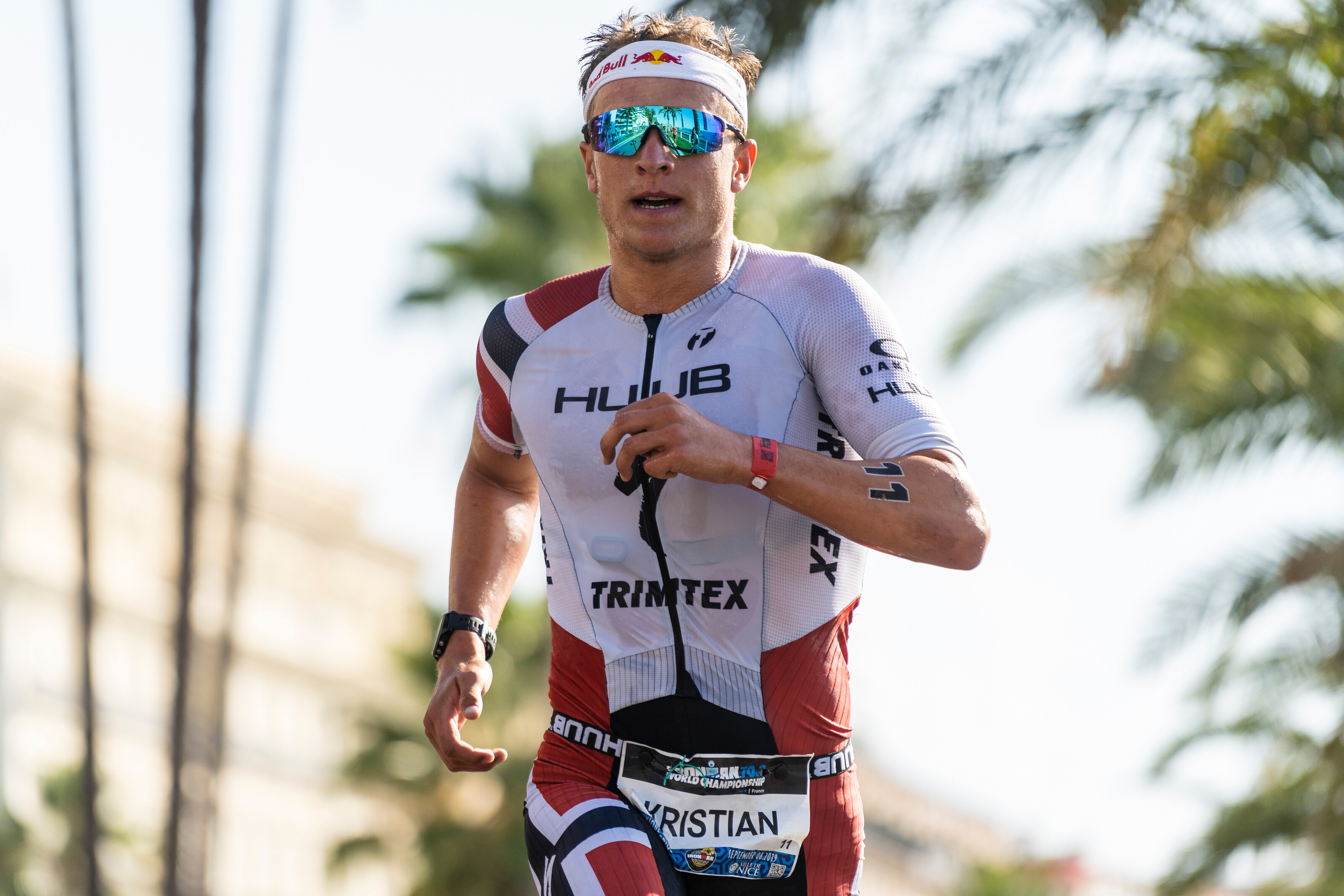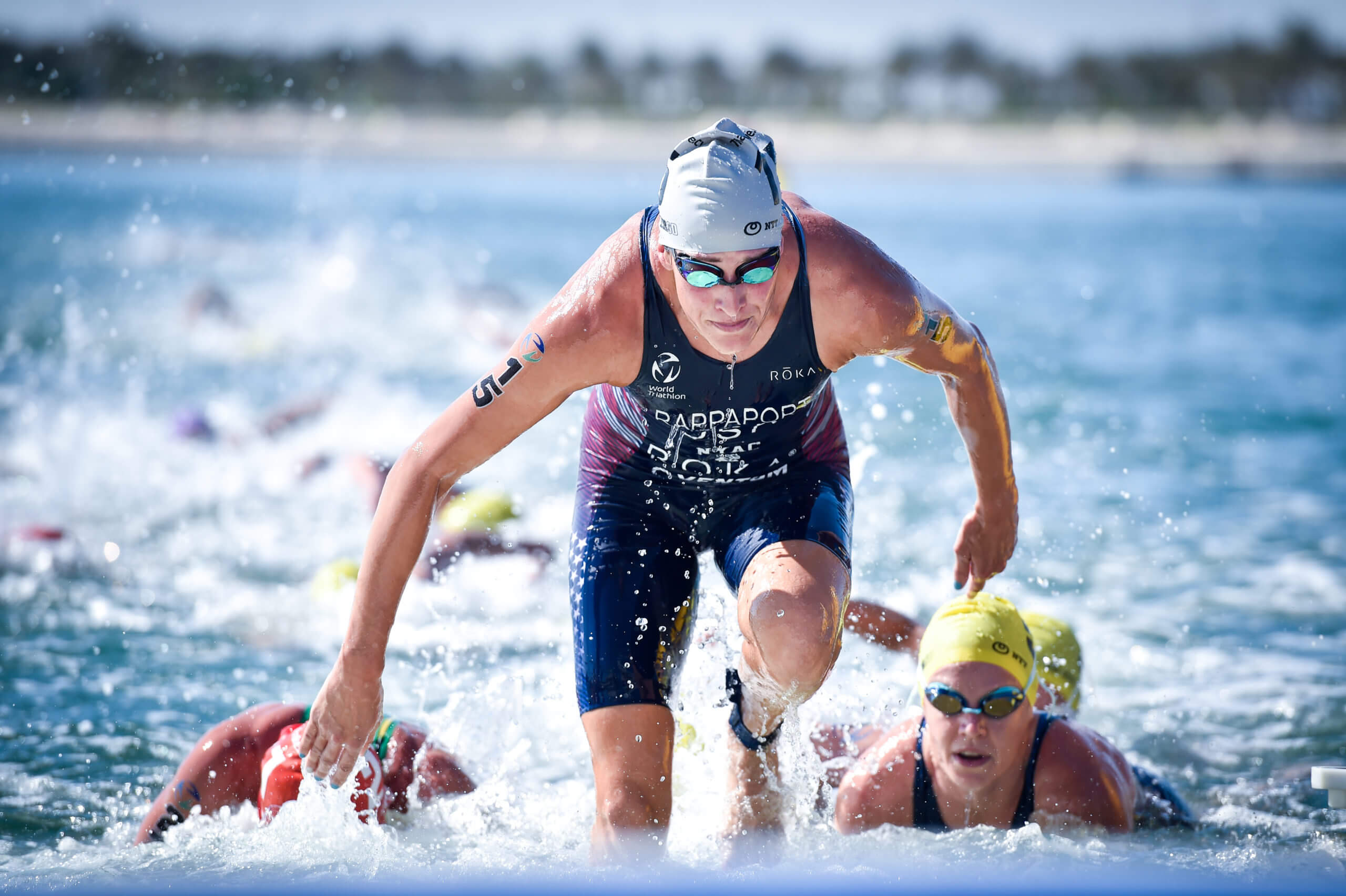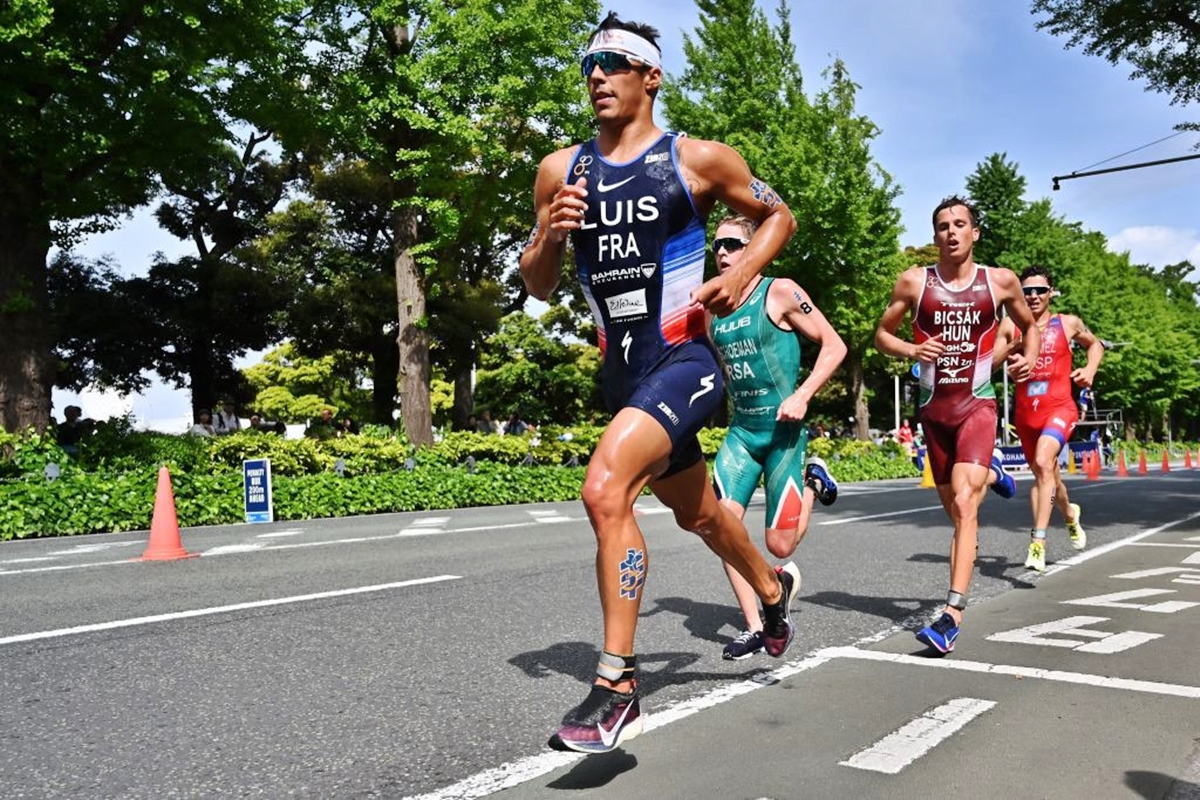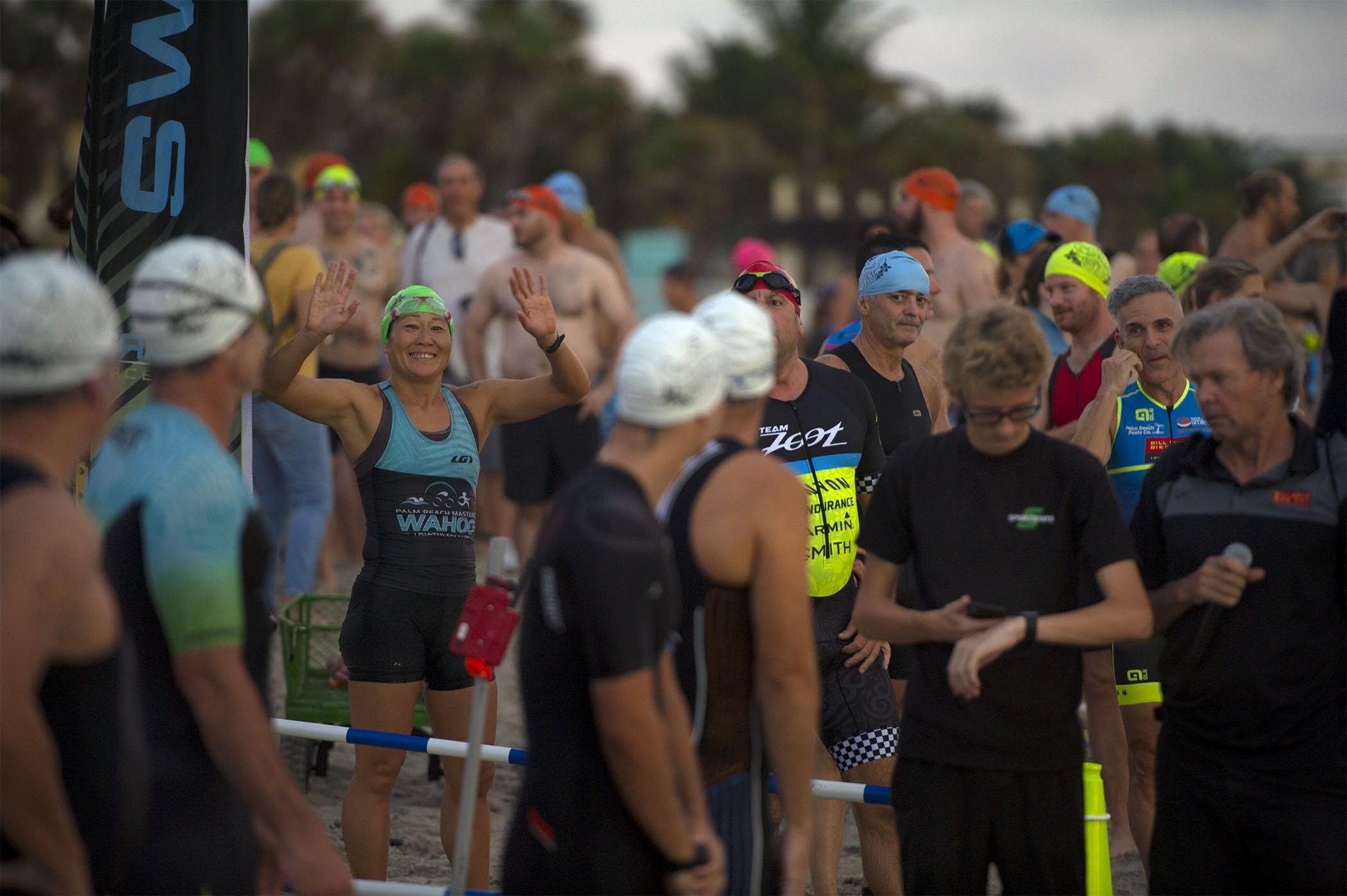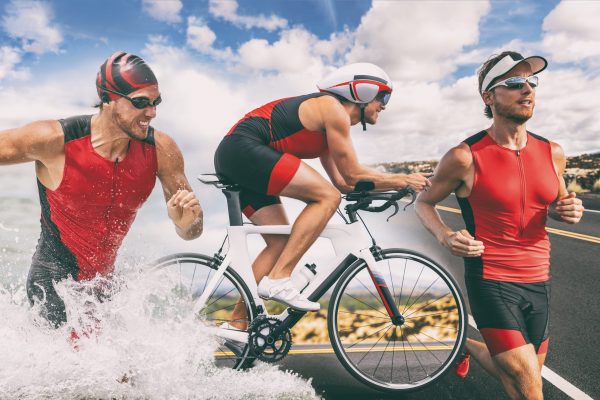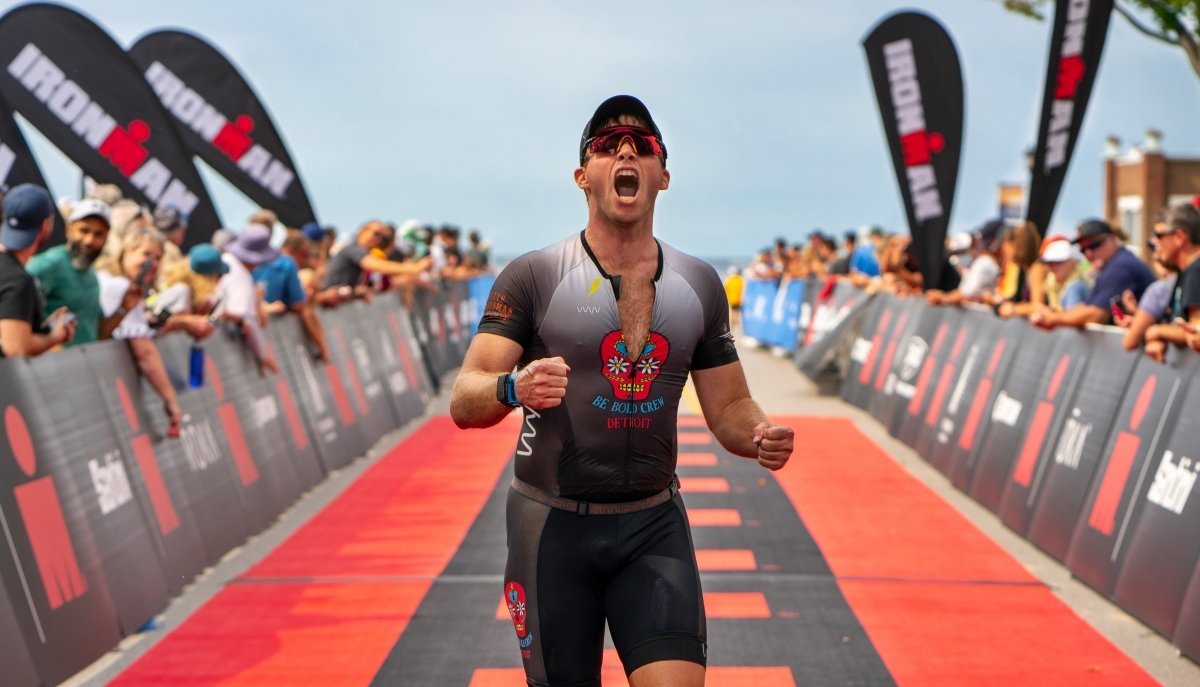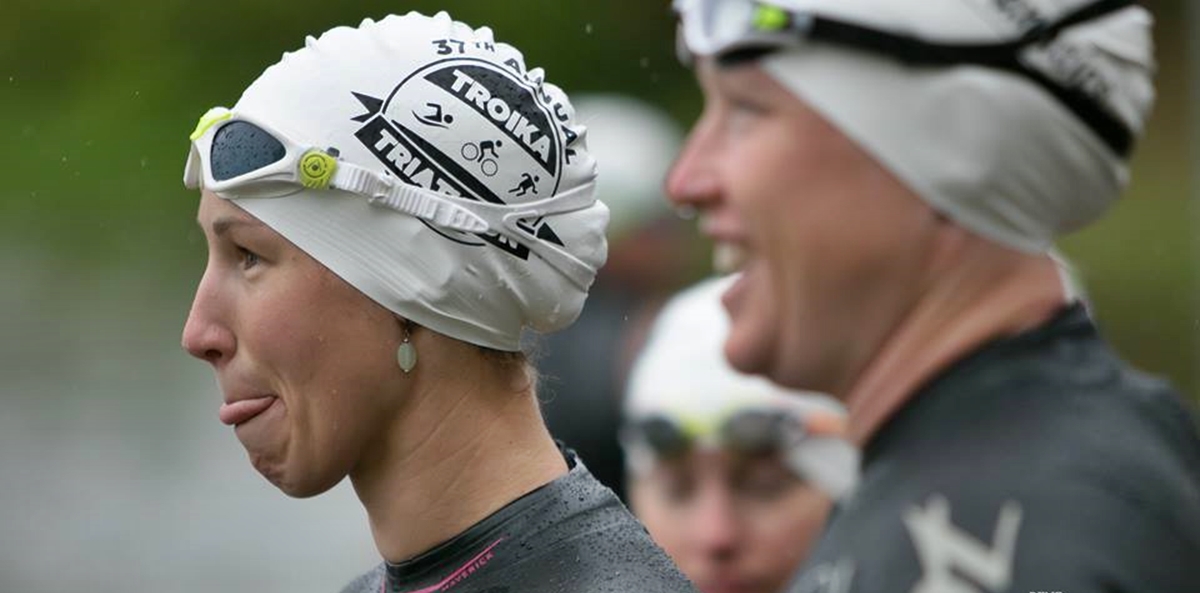Home>Misc>Featured>What Is The Best Training For A Triathlon
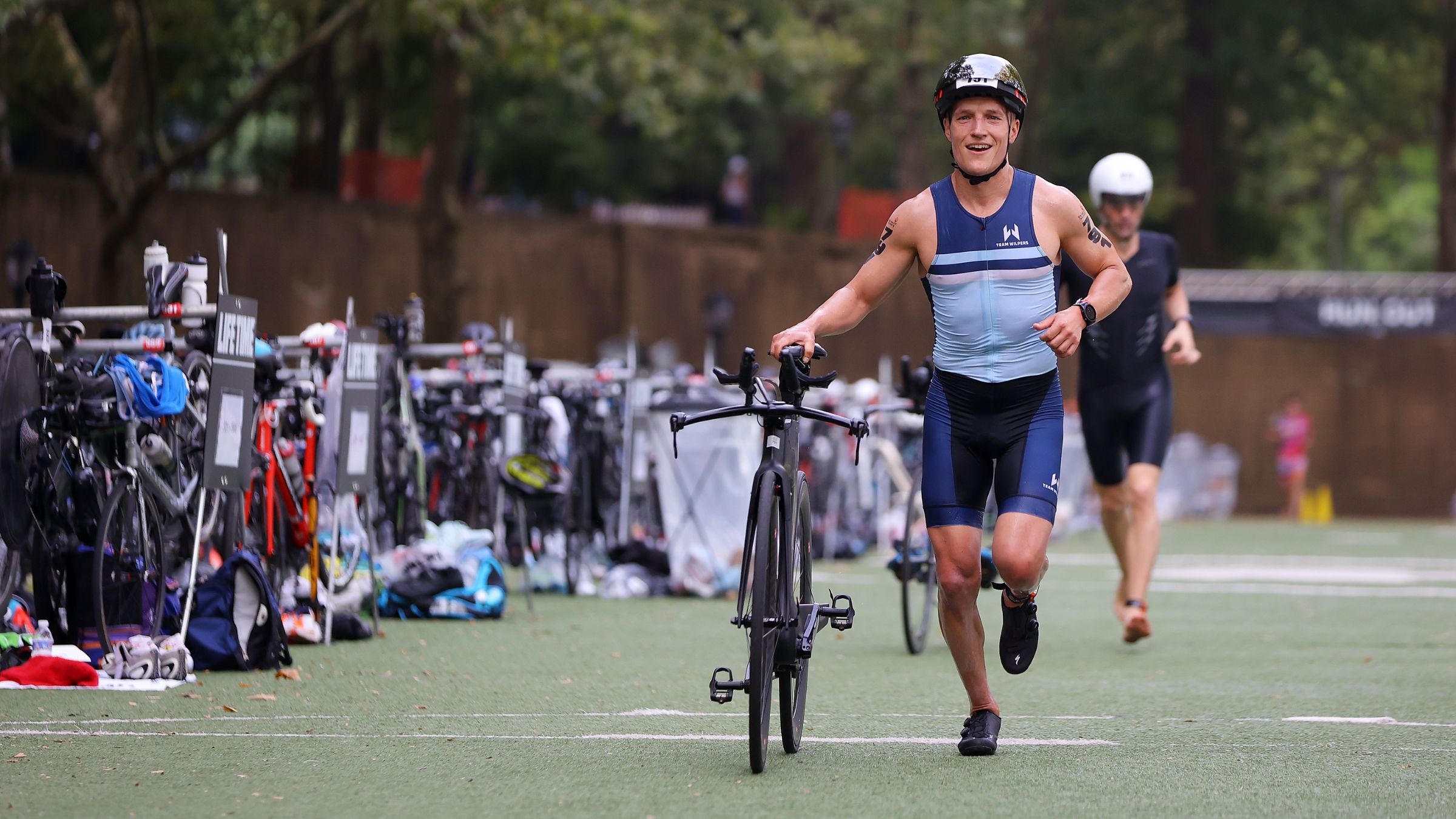

Featured
What Is The Best Training For A Triathlon
Modified: August 21, 2023
Looking for the best featured training for a triathlon? Discover proven techniques to excel in this ultimate endurance challenge. Try it now!
Introduction
Triathlon is a multi-disciplinary sport that combines swimming, cycling, and running into one challenging event. It pushes athletes to their limits, both physically and mentally, and requires a comprehensive training regimen to ensure success on race day. Whether you are a seasoned triathlete or a beginner looking to take on the triathlon challenge, having the right training plan is essential.
Training for a triathlon is not just about improving your performance in each individual sport; it’s about developing the ability to seamlessly transition between them. The demands of each discipline are unique, and training for them requires a targeted approach. By focusing on the swim, bike, and run components of triathlon training, as well as incorporating strength and conditioning, nutrition and hydration, rest and recovery, and mental preparation, you can maximize your potential and enhance your overall performance.
Triathlon training is a journey that requires dedication, commitment, and perseverance. It’s not just about crossing the finish line; it’s about pushing your boundaries, conquering your fears, and discovering what you are truly capable of. Whether you are aiming to complete your first sprint triathlon or looking to compete at the elite level, the right training plan can make all the difference in achieving your goals.
In this article, we will delve into the various aspects of triathlon training and explore the best practices to help you reach your full potential. From swim training techniques and bike workouts to run training strategies and strength and conditioning exercises, we will cover it all. Additionally, we will discuss the importance of nutrition and hydration, the significance of rest and recovery, and the role of mental preparation in triathlon training.
So, if you’re ready to embark on this incredible journey and challenge yourself like never before, let’s dive into the world of triathlon training and uncover the secrets to becoming a successful triathlete.
Understanding Triathlon
Triathlon is an endurance sport that combines three disciplines: swimming, cycling, and running. It is a demanding and exhilarating event that requires athletes to showcase their skills and stamina across all three disciplines in succession. Triathlon races can vary in distance, with the most common being sprint, Olympic, half Ironman, and Ironman distances.
In a triathlon, the race begins with the swim leg, followed by the bike leg, and concludes with the run leg. Transition times, where athletes switch from one discipline to another, are also a crucial part of the race. Triathlons can take place in various settings, including pools, open water such as lakes or oceans, and on roads or trails for cycling and running.
One of the unique aspects of triathlon is that it requires athletes to excel in multiple sports, each with its own set of challenges. Swimmers must navigate through the water, cyclists must master the mechanics of their bikes, and runners must endure the impact of continuous foot strikes. By combining these disciplines, triathlon tests an athlete’s physical and mental endurance, strength, flexibility, and technique.
Triathlon is not just a race; it is an adventure that attracts athletes of all ages, backgrounds, and abilities. From beginners looking to challenge themselves and improve their fitness to seasoned athletes aiming for personal bests or podium finishes, triathlon offers something for everyone. It fosters a sense of community and camaraderie among participants, who often train together, share stories and experiences, and support each other throughout their triathlon journey.
To participate in a triathlon, athletes need to possess a certain level of fitness and undergo specific training regimens. It is essential to have a solid foundation in each discipline, as well as the ability to transition smoothly from one to the next. Understanding the intricacies of triathlon and the unique demands it places on the body and mind is crucial for anyone embarking on their triathlon journey.
In the following sections of this article, we will explore the importance of training in triathlon and delve into the various components that make up an effective triathlon training plan. By understanding the sport and its requirements, you can tailor your training approach to optimize your performance and achieve your triathlon goals.
Importance of Training in Triathlon
Training is the foundation of success in triathlon. It plays a pivotal role in preparing athletes physically, mentally, and emotionally for the demands of the sport. Developing a well-rounded and structured training plan is crucial to ensure that athletes can perform at their best during races and prevent injuries.
One of the main reasons training is important in triathlon is to build endurance. Triathlon races can last for hours, and athletes need to have the stamina to sustain a high level of effort across all three disciplines. Endurance training involves gradually increasing the duration and intensity of workouts to improve aerobic capacity and muscular endurance.
Another key aspect of triathlon training is improving speed and technique. Each discipline requires specific skills and techniques that can only be honed through consistent practice. For example, swimmers may focus on refining their stroke efficiency, cyclists may work on pedal cadence and bike handling skills, and runners may concentrate on gait analysis and running form.
Training also helps athletes develop mental fortitude and resilience. Triathlons are mentally challenging events, and it is essential to strengthen the mind to overcome physical fatigue and push through tough moments during the race. Mental training techniques, such as visualization, goal setting, and positive self-talk, can improve focus, motivation, and mindset.
Furthermore, training allows athletes to assess and monitor their progress. By tracking performance metrics, such as swim times, cycling power output, and run pace, athletes can gauge their improvements and identify areas that need further attention. Regular training also provides opportunities to test race strategies, nutrition plans, and equipment choices to optimize performance on race day.
Equally important, training helps reduce the risk of injuries. Triathlon involves repetitive and high-impact movements, and improper training can lead to overuse injuries. Incorporating strength and conditioning exercises into the training plan can improve muscle imbalances, enhance stability, and prevent common triathlon-related injuries.
Lastly, training fosters discipline and commitment. Consistently following a training schedule, making necessary lifestyle adjustments, and sacrificing time and energy demonstrate the dedication needed for success in triathlon. Training also encourages athletes to embrace a healthy lifestyle, focusing on nutrition, hydration, rest, and recovery.
In summary, the importance of training in triathlon cannot be overstated. Through training, athletes build endurance, improve speed and technique, develop mental resilience, track progress, reduce the risk of injuries, and cultivate discipline. It is the foundation upon which triathletes can excel in the sport and achieve their goals. In the next sections, we will explore the various components of triathlon training, providing tips and insights to help you optimize your performance in each discipline.
Components of Triathlon Training
Triathlon training involves a combination of swim, bike, and run workouts, along with additional components that enhance overall performance. By incorporating these key components into your training plan, you can develop the necessary skills, endurance, and strength to excel in each discipline and seamlessly transition between them.
1. Swim Training: In triathlon, the swim leg is often the first part of the race. Improving swim technique, efficiency, and speed through drills and interval training is crucial. It is also important to practice open water swimming to familiarize yourself with the conditions encountered during races.
2. Bike Training: Cycling is a significant portion of any triathlon race. Focus on building cycling endurance through long rides, interval training, and hill repeats. It is essential to work on bike handling skills, such as cornering, descending, and gear shifting, to navigate various terrains with confidence and efficiency.
3. Run Training: The run leg challenges athletes’ cardiovascular fitness and running mechanics. Incorporate both long, slow distance runs for endurance and speed workouts, such as intervals and tempo runs, to improve running speed and efficiency. Strengthening exercises, like hill repeats and plyometrics, can also enhance power and reduce the risk of injuries.
4. Strength and Conditioning: Strength training is essential for triathletes to improve muscular strength, power, and durability. Focus on exercises that target the major muscle groups used in swimming, cycling, and running. Core workouts, stability exercises, and functional movements should also be included to enhance overall stability and balance.
5. Nutrition and Hydration: Proper nutrition and hydration play a crucial role in triathlon performance. Fuel your body with a well-balanced diet that includes carbohydrates, proteins, and healthy fats. Develop a nutrition plan for training and racing, ensuring adequate fueling and hydration before, during, and after workouts.
6. Rest and Recovery: Rest and recovery are often overlooked but are crucial for avoiding overtraining and maximizing performance. Incorporate rest days into your training schedule, allowing your body to recover and repair. Adequate sleep, foam rolling, stretching, and massage can also aid in recovery and minimize the risk of injuries.
7. Mental Preparation: Triathlon requires mental strength and focus. Implement mental training techniques, such as visualization, meditation, and positive affirmations, to develop a resilient and positive mindset. Set realistic goals, manage pre-race nerves, and practice mental strategies to overcome adversity during the race.
By addressing these components in your training plan, you can ensure a comprehensive and well-rounded approach to triathlon preparation. Each component is crucial in its own way and contributes to your overall performance on race day. In the following sections, we will delve deeper into each of these components, providing specific tips and strategies to help you excel in each discipline and optimize your triathlon training.
Swim Training for Triathlon
The swim leg is often the first part of a triathlon, making swim training an essential component of triathlon preparation. Whether you are a beginner swimmer or a seasoned athlete looking to improve your technique and speed, incorporating specific swim workouts into your training plan will help you excel in the water during a triathlon.
1. Technique Development: Focus on improving your swim technique to swim efficiently and conserve energy. Work on body position, streamlining, breathing, and stroke mechanics. Incorporate drills, such as sculling, kick drills, and single-arm drills, to reinforce technique and develop muscle memory.
2. Distance and Endurance: Gradually increase the distance you swim to build endurance for the swim leg of the triathlon. Start with shorter distances and gradually work your way up to the race distance. Incorporate longer, steady swims and interval training to improve aerobic capacity and mental toughness.
3. Open Water Skills: Practice swimming in open water to simulate race conditions. This will help you become more comfortable with the open water environment and allow you to navigate through waves, currents, and other athletes. Practice sighting techniques to swim in a straight line and avoid veering off course.
4. Speed Workouts: Include speed workouts to improve your swimming speed and race pace. Interval training, sprints, and timed trials will help you develop the ability to swim at a faster pace for shorter distances. Incorporate drills that focus on increasing stroke rate and power in order to swim faster without sacrificing technique.
5. Transition Training: Incorporate simulated transitions into your swim workouts. Practice exiting the water quickly, removing your wetsuit (if applicable), and transitioning smoothly to the bike leg. This will help you become more efficient in the transitions and save valuable time during the race.
6. Open Water Practice: Whenever possible, train in open water to get accustomed to the challenges it presents. Get comfortable with swimming in different conditions, such as high waves, low visibility, and navigating around buoys. This will help reduce any anxiety or panic during the race.
7. Strength and Conditioning: Include strength and conditioning exercises that target the muscles used in swimming, such as the shoulders, back, and core. This will improve swimming efficiency and power. Incorporate exercises like pull-ups, push-ups, lat pulldowns, and planks into your training regimen.
Remember to listen to your body and gradually increase the volume and intensity of your swim workouts. Incorporating a variety of training methods will help you develop the necessary skills and fitness to conquer the swim leg of a triathlon. In the next sections, we will explore bike and run training, as well as key components like strength and conditioning, nutrition and hydration, rest and recovery, and mental preparation to further enhance your triathlon training.
Bike Training for Triathlon
The bike leg of a triathlon is often the longest portion of the race, making bike training a critical component of triathlon preparation. Whether you’re a beginner cyclist or a seasoned rider looking to improve your speed and endurance, focusing on specific bike workouts will help you excel on race day.
1. Endurance Rides: Building endurance is key for a successful bike leg. Gradually increase the duration of your long rides, simulating the distance of your target race. Focus on maintaining a consistent pace throughout the ride, gradually increasing your time in the saddle.
2. Hill Training: Incorporating hill workouts will help improve your strength and power on the bike. Look for hills of varying inclines and lengths to challenge yourself. Practice climbing in and out of the saddle to develop strength and efficiency for both uphill and flat sections of a triathlon course.
3. Interval Training: Interval workouts are an effective way to improve speed and build stamina. Alternate between high-intensity efforts and recovery periods to replicate the demands of a race. Examples include tempo intervals, where you maintain a steady effort just below your maximum sustainable pace, and sprint intervals to improve your top-end speed.
4. Race-Specific Training: Familiarize yourself with the race course and its characteristics. If the course is hilly, train on similar terrain to prepare your body for the demands of climbing. If the course is flat, work on maintaining a constant speed and maximizing aerodynamics.
5. Brick Workouts: Incorporate brick workouts into your training plan to simulate the transition from the bike to the run. After a challenging bike ride, transition quickly to a short run to acclimate your legs to the sensation of running after cycling. This will help improve your transition times and running performance.
6. Bike Handling Skills: Work on improving your bike handling skills to increase confidence and efficiency. Practice cornering, bike control, and quick gear changes. This will not only help you navigate turns and technical sections but also help you conserve energy by maintaining a smooth and steady speed.
7. Bike Fit: Ensure a proper bike fit to optimize your comfort and efficiency on the bike. A professional bike fit can help prevent injuries, improve your power output, and reduce fatigue. Adjustments to saddle height, handlebar reach, and cleat position can make a significant difference in your performance.
Remember to incorporate strength and conditioning exercises that target the muscles used in cycling, such as the quadriceps, hamstrings, glutes, and core. Additionally, practicing proper nutrition and hydration during your longer rides will help you fuel your body adequately and optimize your performance.
By incorporating these bike training strategies into your triathlon preparation, you’ll develop the necessary speed, endurance, and bike handling skills to conquer the bike leg of the race. In the following sections, we will explore run training, strength and conditioning exercises, nutrition and hydration, rest and recovery, and mental preparation to further enhance your triathlon training and overall performance.
Run Training for Triathlon
The run leg of a triathlon is often the final portion of the race and can be a make-or-break moment for many athletes. Developing effective run training strategies will help improve your speed, endurance, and overall performance during a triathlon.
1. Building Endurance: Gradually increase your running distance to build endurance. Start with shorter runs and progressively add mileage over time. Long, slow distance runs will help improve aerobic capacity and mental toughness for the run leg of the triathlon.
2. Speed Workouts: Incorporate speed workouts to improve your running pace and race-specific speed. Tempo runs, intervals, and fartlek training can help you develop the ability to sustain and increase your running pace for shorter distances. These workouts will also improve your VO2 max and lactate threshold.
3. Transition Runs: Practice brick workouts, where you transition from cycling to running immediately after finishing a bike ride. These workouts will help your body adapt to the sensation of running after cycling and enhance your transition skills.
4. Hill Training: Include hill repeats in your training to build strength and power on inclines. Running uphill challenges your muscles and cardiovascular system, preparing you for hilly sections of a triathlon course. Incorporate both short and long hills into your training regimen.
5. Interval Training: Interval training involves alternating between high-intensity efforts and recovery periods. This type of training helps improve your running speed and efficiency. Incorporate intervals such as 400-meter repeats, 800-meter repeats, or pyramid intervals to increase your overall running performance.
6. Form and Technique: Focus on running form and technique to enhance efficiency and reduce the risk of injury. Pay attention to your posture, stride length, cadence, and foot strike. Incorporate drills and exercises to improve your running mechanics, such as high knees, butt kicks, and strides.
7. Mental Training: Mental strength is crucial during the run leg of a triathlon. Develop mental strategies, such as positive self-talk, visualization, and goal setting, to stay focused and motivated during challenging moments. Practice mental toughness to push through fatigue and discomfort.
8. Recovery Runs: Include easy recovery runs in your training plan to facilitate active recovery and promote muscle repair. These shorter, low-intensity runs help flush out lactic acid and help you recover faster from harder workouts.
Remember to listen to your body and ensure that you avoid overtraining or pushing yourself too hard. Gradually increase the volume and intensity of your run workouts to prevent injuries and allow for proper adaptation. Additionally, incorporate strength and conditioning exercises that target the muscles used in running, such as the glutes, hamstrings, quadriceps, and core.
By incorporating these run training strategies into your triathlon preparation, you’ll improve your running endurance, speed, form, and mental resilience. In the following sections, we will explore strength and conditioning exercises, nutrition and hydration, rest and recovery, and mental preparation to further optimize your triathlon training.
Strength and Conditioning for Triathlon
Strength and conditioning training is a crucial component of triathlon preparation that helps improve overall performance, prevent injuries, and enhance resilience. By incorporating specific exercises that target the muscles used in swimming, cycling, and running, triathletes can develop power, stability, and endurance for each discipline.
1. Full-Body Strengthening: Focus on exercises that engage multiple muscle groups and mimic the movements of swimming, cycling, and running. Squats, lunges, deadlifts, and push-ups are examples of compound exercises that work the entire body and improve overall functional strength.
2. Core Strength: A strong core is essential for maintaining proper posture, stability, and balance throughout each discipline. Incorporate exercises such as plank variations, Russian twists, and bridges to strengthen the core muscles, including the abdominals, obliques, and lower back.
3. Flexibility and Mobility: Perform dynamic stretching and mobility exercises both during warm-up and after your workouts to increase flexibility and prevent muscle imbalances. Pay particular attention to the hips, shoulders, and spine, as these areas are heavily engaged in triathlon movements.
4. Plyometric Training: Plyometric exercises, such as box jumps, squat jumps, and lateral bounds, improve explosive power and coordination. These exercises mimic the quick accelerations and directional changes required during the transitional phases of a triathlon.
5. Single-Leg Exercises: Triathlon disciplines often require unilateral movement, so it’s essential to strengthen each leg individually. Include exercises like single-leg squats, step-ups, and hamstring curls to improve balance and address any muscle imbalances.
6. Swim-Specific Exercises: Incorporate exercises that specifically target the muscles used in swimming, such as lat pulldowns, rows, and shoulder press. Strengthening the upper body will improve swim power and endurance.
7. Cycling-Specific Exercises: Enhance cycling power by incorporating exercises like leg presses, hamstring curls, and calf raises. Focus on strengthening the quadriceps, hamstrings, glutes, and calves to improve cycling performance.
8. Running-Specific Exercises: Strengthen the lower body muscles used in running, such as the glutes, quadriceps, hamstrings, and calves. Exercises like lunges, step-ups, and calf raises will improve running speed, endurance, and stability.
Remember to vary your strength and conditioning workouts, focusing on different muscle groups and incorporating exercises that challenge both muscular strength and endurance. Consult with a strength and conditioning professional if you are unsure about technique or exercise selection.
Additionally, prioritize recovery between strength training sessions and align them strategically with your swim, bike, and run workouts to allow for proper rest and adaptation. By including strength and conditioning in your training plan, you will see improvements in your performance, overall body strength, and injury prevention. In the following sections, we will explore nutrition and hydration, rest and recovery, mental preparation, and additional tips to optimize your triathlon training and race-day performance.
Nutrition and Hydration in Triathlon Training
Nutrition and hydration play a vital role in triathlon training, as fueling your body properly can optimize performance, aid in recovery, and maintain overall health. A well-balanced and properly timed nutrition and hydration plan will give you the energy and endurance necessary to perform at your best throughout each discipline of a triathlon.
1. Pre-Training Nutrition: Fuel your body before workouts with a combination of carbohydrates, proteins, and healthy fats. Carbohydrates provide readily available energy, while proteins aid in muscle repair and growth. Plan your meals and snacks to ensure a sufficient intake of these macronutrients before training sessions.
2. During-Training Hydration: Stay hydrated during training sessions by consuming fluids at regular intervals. Aim to drink around 500 ml (16 to 20 ounces) of fluid per hour of exercise, depending on the intensity and climate. Consider using a sports drink to replenish electrolytes lost through sweating.
3. During-Training Fueling: For longer training sessions, incorporate fueling with easily digestible carbohydrates such as energy gels, chews, or sports drinks. Aim for around 30-60 grams of carbohydrates per hour, depending on the duration and intensity of the workout.
4. Post-Training Recovery: Proper post-training nutrition is essential for muscle recovery and glycogen replenishment. Consume a combination of carbohydrates and proteins within 30 minutes to an hour after training to optimize recovery and reduce muscle soreness. This could be in the form of a recovery drink, a protein shake, or a well-balanced meal.
5. Race-Day Nutrition: Develop a nutrition and hydration plan specific to your race day. Practice your plan during training to determine what works best for you. Focus on easily digestible carbohydrates to sustain energy levels throughout the race. Use sports drinks, energy gels, and other easily portable nutrition options during the race to maintain energy and fuel your muscles.
6. Nutrient Timing: Timing meals and snacks strategically can optimize performance and recovery. Consume a balanced meal 2-3 hours before training to provide sustained energy. During longer workouts, fuel at regular intervals to prevent energy depletion. Post-training, prioritize refueling within the recovery window to enhance muscle glycogen storage and repair.
7. Hydration Strategies: Hydrate consistently throughout the day, especially on training days. Monitor your urine color to gauge hydration levels; pale yellow urine generally indicates proper hydration. Consider weighing yourself before and after longer training sessions to determine fluid loss, and aim to replace fluids accordingly. Incorporate electrolyte-rich fluids to replenish what is lost through sweat.
Remember that nutrition and hydration are individualized, so what works for one athlete may not work for another. Experiment during training to find the nutrition and hydration plan that suits your body’s needs and preferences. Consult with a sports nutritionist or registered dietitian who specializes in endurance sports for personalized advice.
By prioritizing proper nutrition and hydration in your triathlon training, you’ll optimize your performance, enhance your recovery, and stay healthy throughout the entire training process. In the following sections, we will explore rest and recovery, mental preparation, and additional tips to further enhance your triathlon training and race-day performance.
Rest and Recovery in Triathlon Training
Rest and recovery are vital components of triathlon training that often go overlooked. Proper rest and recovery allow your body to repair and rebuild, preventing overtraining, reducing the risk of injuries, and maximizing performance gains. Incorporating rest days, adequate sleep, and various recovery strategies into your training plan will enhance your overall triathlon experience.
1. Rest Days: Schedule regular rest days into your training plan to allow your body to recover and recharge. Rest days are just as important as training days, as they provide an opportunity for your muscles, joints, and connective tissues to repair and rebuild.
2. Active Recovery: Engage in light physical activity on rest days, such as gentle stretching, yoga, or walking. This promotes blood circulation, aids in the removal of metabolic waste products, and helps prevent muscle stiffness and soreness.
3. Sleep: Prioritize adequate sleep to support recovery and optimize overall performance. Aim for 7-9 hours of quality sleep each night to repair muscle tissue, regulate hormones, and rejuvenate your body and mind.
4. Nutrition: Proper nutrition plays a crucial role in recovery. Consume a balanced diet with sufficient protein, carbohydrates, healthy fats, and vitamins to support muscle repair and glycogen replenishment. Nourish your body with whole foods that provide essential nutrients for optimal recovery.
5. Hydration: Hydrate properly throughout the day to assist in the recovery process. Staying adequately hydrated aids in muscle function, nutrient transport, and removal of metabolic waste products. Monitor your urine color to ensure you’re staying hydrated.
6. Massage and Foam Rolling: Use self-massage techniques or schedule regular sports massages to release muscle tension, increase blood flow, and promote muscle recovery. Foam rolling can also help alleviate muscle tightness and soreness.
7. Stretching and Mobility: Incorporate stretching and mobility exercises into your routine to improve flexibility, reduce muscle tightness, and enhance joint range of motion. This can help prevent injuries and improve overall movement efficiency.
8. Cross-Training: Engage in low-impact cross-training activities, such as swimming or cycling, to provide a break from the repetitive stress of running and reduce the risk of overuse injuries. This allows you to maintain cardiovascular fitness while giving your running muscles a break.
It’s important to remember that recovery is not a sign of weakness, but rather an essential part of the training process. By prioritizing rest and recovery, you allow your body to adapt to the training stimulus, leading to improved performance and reduced risk of burnout or injury.
Every athlete’s recovery needs will vary, so listen to your body and adjust your training plan accordingly. If you’re feeling excessively fatigued or experiencing persistent muscle soreness, consider incorporating more rest and recovery strategies into your routine. Your body will thank you, and you’ll be better equipped to handle the demands of your triathlon training.
In the following sections, we will explore mental preparation, additional tips, and strategies to optimize your triathlon training and race-day performance.
Mental Preparation for Triathlon
Mental preparation is a fundamental aspect of triathlon training that can greatly influence performance on race day. Developing mental resilience, focusing on goal setting, and employing strategies to overcome challenges are crucial in ensuring a successful triathlon experience. By incorporating mental preparation techniques into your training, you can enhance your mental fortitude, optimize focus, and perform at your best when it matters most.
1. Goal setting: Set clear and specific goals for your triathlon training and races. Having tangible targets helps maintain motivation, provides a sense of direction, and allows you to track progress. Whether it’s completing your first triathlon or aiming for a personal best time, having meaningful goals will keep you focused throughout your training process.
2. Visualization: Use visualization techniques to mentally rehearse and visualize yourself conquering each discipline of the triathlon. Picture yourself swimming, cycling, and running with speed, ease, and confidence. Visualize successfully transitioning between each leg and crossing the finish line. This mental rehearsal can improve confidence and performance on race day.
3. Positive self-talk: Cultivate a positive and empowering inner dialogue. Replace negative thoughts or self-doubt with encouraging and motivational affirmations. Use phrases like “I am strong,” “I can do this,” and “I am prepared.” Positive self-talk can help boost confidence and keep you focused during challenging moments.
4. Performance cues: Develop performance cues or trigger words that help you stay focused and motivated during the race. Choose words or phrases that resonate with you and remind you of your training, strengths, and strategies. Repeat these cues to yourself during training sessions and on race day to help maintain a strong mental state.
5. Mental toughness training: Incorporate mental toughness training into your triathlon preparation. Push yourself out of your comfort zone during training to build mental resilience and prepare for the physical and mental challenges that may arise during the race. Practice embracing discomfort and maintaining a strong mindset despite fatigue or adversity.
6. Race strategy: Develop a solid race strategy that encompasses pacing, nutrition, transitions, and mental focus. Having a well-thought-out plan can help manage nerves, reduce decision-making stress during the race, and improve overall race performance. Implementing a race strategy also provides a sense of control and confidence on race day.
7. Mindfulness and relaxation techniques: Incorporate mindfulness and relaxation practices into your training routine to reduce stress and improve focus. Techniques such as deep breathing exercises, meditation, and yoga can help you stay present, calm your mind, and increase mental clarity. These practices also aid in managing pre-race nerves and enhancing overall well-being.
Remember, mental preparation is just as important as physical training in triathlon. By incorporating mental resilience strategies, visualizing success, practicing positive self-talk, and developing a strong race strategy, you can optimize your mental state and perform at your best during training and competition.
In the next sections, we will explore additional tips, strategies, and considerations to further enhance your triathlon training and race-day performance.
Conclusion
Training for a triathlon requires a comprehensive and well-rounded approach that addresses the specific demands of swimming, cycling, and running. By incorporating swim, bike, and run workouts into your training plan, along with strength and conditioning exercises, nutrition and hydration strategies, rest and recovery practices, and mental preparation techniques, you can optimize your performance and improve your chances of success on race day.
Swim training focuses on technique development, endurance building, and open water skills. Bike training involves building endurance, improving speed, and honing bike handling skills. Run training aims to enhance endurance, speed, and running form. These three disciplines form the foundation of a successful triathlon, and each requires dedicated attention and tailored workouts.
Additionally, strength and conditioning exercises are essential for overall performance and injury prevention. Proper nutrition and hydration support energy levels and aid in muscle recovery. Rest and recovery are important to allow the body to repair and adapt. Mental preparation techniques, including goal setting, visualization, and positive self-talk, help cultivate mental resilience and focus.
By incorporating these components into your triathlon training plan, you can optimize your performance, reduce the risk of injuries, and thoroughly prepare yourself for the challenge ahead. Remember to listen to your body, adjust your training plan as needed, and seek the guidance of professionals when necessary.
Triathlon is an incredible journey that pushes your physical and mental limits, challenges your resilience, and provides a sense of accomplishment like no other. Embrace the process, enjoy the training, and celebrate every milestone along the way.
So, whether you are a novice triathlete or a seasoned competitor, take the time to prepare yourself in all the aspects of triathlon training. Dedicate yourself to swim, bike, and run workouts, focus on strength and conditioning, prioritize nutrition and hydration, allow for proper rest and recovery, and develop mental toughness. With the right training, preparation, and mindset, you can cross the finish line of your triathlon with pride and satisfaction, knowing that you have pushed your limits and achieved something remarkable.
